Kate Rauner's Blog, page 94
September 4, 2014
Citizen Scientists into Orbit
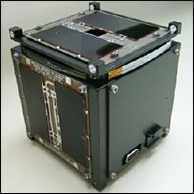
CubeSat
This is cool:
“Students and teachers across the world will be able to control tiny cube-shaped satellites orbiting the globe 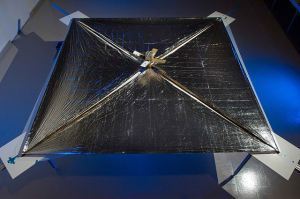 nearly 100 miles above their schools, harnessing high-tech sensors aboard the devices to predict thunderstorms, solar flares and much more.” CubeSats
nearly 100 miles above their schools, harnessing high-tech sensors aboard the devices to predict thunderstorms, solar flares and much more.” CubeSats








September 3, 2014
Science Defeated – a poem by Kate Rauner
No experiment is a failure
Unless the data’s lost.
But science fails daily
And we pay the cost.
Why should you share results
If you paid the bill?
Why publish any finding
That won’t help to sell your pills?
‘Cause when the field’s medicine
Withholding has a cost,
A price that every patient pays
In health or money lost.
You have an obligation,
To an ethic you are bound.
Science only prospers
When you publish what you’ve found.
I’m enough of a libertarian to believe my rights are equal to those of a corporation. Europe is ahead of America here. Below are three links to videos from AllTrials Campaign (alltrials@senseaboutscience.org or use #AllTrials) on why we urgently need all clinical trials registered and the results reported.
Withholding results costs lives – The results of a 1980s clinical trial on heart drug Lorcainide were never published. Doctors didn’t know that more people died in the trial who were given Lorcainide than who were taking the placebo. It has been estimated that over 100,000 people died avoidably because they were prescribed drugs in the same class.
Doctors are being misled – Dr Ben Goldacre prescribed the antidepressant Reboxetine for a patient but says he was “misled.” Results from trials which showed it was worse than other drugs were withheld, while the smaller number of trials which showed it worked better were published.
Medicine is broken – The UK Government has spent £424 million stockpiling Tamiflu, an anti-flu treatment, but we still don’t know if this treatment works any better than placebo. Regulators weren’t given information from all the clinical trials done on Tamiflu. The manufacturers of Tamiflu didn’t break any laws by withholding the information.








August 30, 2014
On Writing – A Memoir Of The Craft
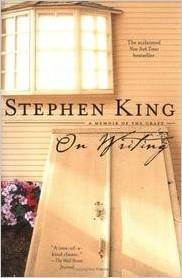 I have tried my hand at writing fiction, so perhaps you’ll allow me a self-indulgent review: Stephen King’s book On Writing.
I have tried my hand at writing fiction, so perhaps you’ll allow me a self-indulgent review: Stephen King’s book On Writing.
He defines stories as “vividly imagined waking dreams,” a form of telepathy between writer and reader over time and space. He also notes that “most books about writing [fiction] are filled with bullshit… shorter the book, the less the bullshit.”
The first seventy pages (of a two-hundred page book) talk about his life, mostly childhood and early influences. He started submitting short stories to magazines in his teens, when a few hand-written words on a form-letter rejection were cause for celebration. King thinks this is still the way to get started, especially to get an agent: get your stories published by little outlets (that may only pay in copies of their magazine); that’s how you build your credentials. (I should point out that the book has a copyright of 2000, so King’s advice pre-dates the recent boom in self-publishing, especially of ebooks.)
It’s a nice introduction to King’s style, but I must admit that, anxious to get to his writing advice, I skimmed much of it.
I’m going to include a lot of King’s specific advice; because I’m sure you’re more interested in his opinions than in mine. King offers advice about the mechanics of writing:
Use The Elements of Style .
Avoid the passive tense – King thinks people write in passive because they are fearful or think it sounds impressive, but it’s weak.
Purge adverbs! “The adverb is not your friend” and “the road to hell is paved with adverbs.”
Vocabulary – “don’t make any conscious effort to improve it… use the first word that comes to your mind, if it is appropriate and colorful.”
“The best form of dialogue attribution is said, as in he said, she said.”
Paragraphs should be neat and utilitarian.
When he presents a “rule” he also discusses exceptions and authors who successfully violate the rule.
I think the core of the book is about how to be a writer of stories. Some of his comments sound discouraging: “If you don’t want to work your ass off, you have no business trying to write well,” and “if you’re a bad writer, no one can help you.” (If you’re a great writer, no one knows how you got there.) But King also mentions the joy and “buzz’ of writing several times and says practice can make a competent writer into a good writer.
King’s “Great Commandment” is to “read a lot and write a lot,” four to six hours a day. “Reading is the creative center of a writer’s life” and “the more you read, the less apt you are to make a fool of yourself.”
He also advises writers to be brave. “Fear is at the root of most bad writing… Good writing is often about letting go of fear and affectation.”
King says that “stories make themselves.” He finds stories like fossils in the ground, part of an pre-existing world. Find a story and give it a place to grow.
Stories and novels consist of three parts: narration (to move the story), description (to create reality for the reader), and dialogue (to bring characters to life). Plot is not one of these parts.
I admit to some confusion over the difference between “plot” and “story”, but for King plotting ruins spontaneity. Outlines and character notes are “tyranny” and a strong enough situation renders plot moot.
For his own work, King bases each book on a situation where a group of characters (flat and featureless as he begins) are in some predicament and they try to work themselves free.
King’s writing method is interesting. He says:
Set up a simple, humble work space without distraction and close the door.
Write every day – if you don’t, characters become stale and you’ll lose hold of plot and pace.
Be honest about how your characters speak and behave, even if they are ignorant, bigoted, or otherwise silly or disreputable.
Back-story helps define characters and motivation, so get it in quickly but remember that most of it isn’t interesting. Flashbacks strike him as boring and corny. It’s easy to fall in love with your back-story and research (which is a form of back-story), so pay close attention to any back-story that bores your beta readers.
A typical novel’s first draft should take no more than three months, written at 2000 words a day and only under “dire circumstances” do less. (He allows a beginner to only do 1000 words a day.)
After the first draft is done, put it in a drawer for six weeks and work on something else. Then take it out, read it, and do a second draft. As you read your first draft, look for the theme and pacing so you can add things that enhance those features and delete things that detract.
Don’t share your draft until you feel it is reasonably reader-friendly. King discusses the roles of his Ideal Reader and beta readers.
After a third draft or polish, King sends his manuscript off (in his case, to agent and publisher), but notes that by the time the “damn smelly old thing” is in print, he’s been over it a dozen times or more.
I appreciate that he mentions one of my favorite things several times: Afternoon naps.
There’s more: writing classes and seminars, how to find and evaluate an agent, use of description and narrative, a first and second draft of a piece of his own writing, and a long list of books he’s read. For a short book, it’s packed with information.
For me, the most unexpected part of the book was near the end. King includes an account of his near fatal accident in 1999. If you want to know what it’s like to be struck by a van while you’re out for a walk, this is the section to read. On Writing was the book he was working on, and five weeks after the accident that nearly killed him, he began writing again.
Whether you’re interested in Stephen King or in writing fiction, On Writing has something you’ll enjoy. For writers, take heart: “The scariest moment is just before you start. After that, things can only get better.”








August 28, 2014
Mystery Solved!
Oh. Boy. A mystery solved. http://bit.ly/XTHWLy Death Valley’s bizarre moving rocks have stumped visitors and scientists for decades. Boulders of black dolomite appear to move on their own across the playa’s flat lakebed, even sliding uphill. No one saw them move – their trails are the only evidence. Now they have been observed. Gentle winds slide the rocks across thin, ephemeral sheets of ice. Many years may pass until conditions are right. “A series of wet winter storms created the perfect conditions from December 2013 through February 2014. Hundreds of rocks scooted across Racetrack Playa five times in 10 weeks…It’s a wonderful Goldilocks phenomenon.”








August 27, 2014
Volcano Stirs – a poem by Kate Rauner
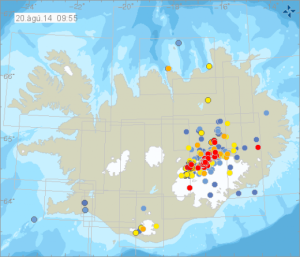
Iceland earthquakes on August 20, 2014
Fire and ice,
Water and ash,
Volcanoes’ heat
Is tapped at last.
Until the earth,
Twitching hourly,
Offers a class
In volcanology.
Ash to bring
The airplanes down,
Lava threatens
Roads and towns.
Melting glaciers
Flood the sea
And flood the homes
And shops and streets.
The hidden folk
Are Iceland hearty.
When elves dance
It’s a wild party.
As I wrote this, the Baroarbunga volcano was not in a full eruption, so no floods and lava flows yet. Iceland’s thirty active volcanoes provide geothermal electricity, heat, and hot water as well as potential destruction. Wikipedia doesn’t mention if Iceland’s Huldufolk cause earthquakes or eruptions, but I could imagine such Good People from folklore have a hand in the volcanoes.








August 23, 2014
Hitch a Ride With NASA

CubeSat
I recently posted a poem about The Planetary Society‘s CubeSat, a tiny satellite that fits in your hand. The little guys are standardized, “approximately four inches long, have a volume of about one quart and weigh about 3 pounds.”While more than one company will launch CubeSats, NASA is offering rides into orbit with them.The current effort is part of a White House initiative to encourage private space industry, offer educational opportunities, and complement NASA missions. Groups sending up CubeSats must fund the satellite themselves – about the cost of a new car. (Okay, a very nice new car, maybe a Tesla. But that’s still a cheap way to get your mission into orbit. An opportunity for citizen scientists interested in space-based technologies.)CubeSat missions launched through NASA must meet NASA criteria. Applicants will submit proposals electronically by 4:30 p.m. EST, Nov. 25. There’s more here.








August 22, 2014
The New Doctor Who Saturday
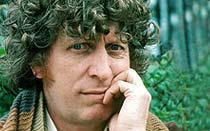
Tom Baker was “my” Doctor
Is everyone ready for the new Doctor Who, premiering tomorrow – Saturday – in the US? The 13th doctor (yes, I count the War Doctor) kicks off the season.
Like many 20th century Americans, Tom Baker was “my” doctor, the measure of all doctors after him and before him. (I watched the doctors out of sequence. My personal quirks: I’ve never seen much of the second Doctor at all, and I am not fond of The Master. But, then, I don’t like Professor Moriarty much in the Sherlock Holmes canon, so consider the source.)
If what I wrote is incomprehensible, perhaps you’re not a Whovian fan. Don’t worry, you can start watching on Saturday: try “not get overly worried about the continuity and minutia and instead enjoy the wit and high-paced, high-stakes adventure.” Doctor Who easily changes the rules, both of the show and of physics, as necessary, so don’t waste energy trying to out-guess him. There’s loads on the Internet if you want background (you may drown in it) or try one little piece here.








August 20, 2014
Pain On a Scale of One to Ten – a poem by Kate Rauner
Is your pain in your knees?
Is your pain in your head?
Who owns your pain
And where has it led?
Who makes the pills
And who makes the rules?
Who gets to decide?
Your struggle’s not yours.
Malpractice insurance,
Politicians and lawyers,
Family and doctors,
Police and employers.
The injured are pitied,
The addicts condemned.
Is heroine cheaper
Than OxyContin?
Fraud or dependence,
From tales we’ve heard
Patients in pain are
Over-pilled
And under-cured.
Inspired by a story at The Atlantic regarding pain traced to somatic (“in the body”) origins. Suffering from mental illness is its own topic.








August 16, 2014
My Latest Interview
Hi everyone.
There’s a new interview with me on Wattpad at http://w.tt/1kKloGX. I hope you’ll enjoy it.








Surfing the Quantum Vacuum
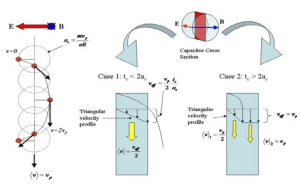
Q-Thruster
I’ve posted about the Light Sail technology, which can propel a spacecraft with the momentum from the sun’s photons. Here’s another no-fuel technology for spacecraft: the Q-Thruster which uses microwaves generated using solar power. It sounds ridiculous at first; it “violates the law of conservation of momentum.” That doesn’t sound promising, but NASA tested the device and found a very small thrust force. Tiny effects can fool scientists – I remember the “cold fusion” kerfuffle many years ago which quickly died when initial results could not be duplicated.
The NASA team is quoted as writing that the device is “producing a force that is not attributable to any classical electromagnetic phenomenon and, therefore, is potentially demonstrating an interaction with the quantum vacuum virtual plasma.” Sounds wild. From EM Drive it seems a related device has been presented at conferences and an evaluation published in a Chinese journal. There’s not enough here yet for me to abandon myself to excitement – I remain cautious. But it would be cool if quantum physics, which sounds so weird, yielded a visible effect that lowers the cost of spacecraft. Keep an eye out for more on this.
PS: I just read this cautionary piece on doubtfulnews.com. Don’t break out the champagne yet: “A propellant-less drive technology would be awesome, but we’ve not yet seen sufficient evidence for one.”












